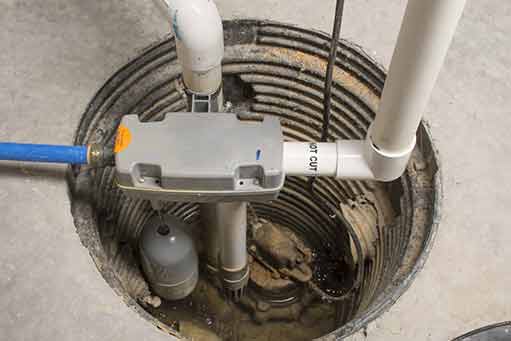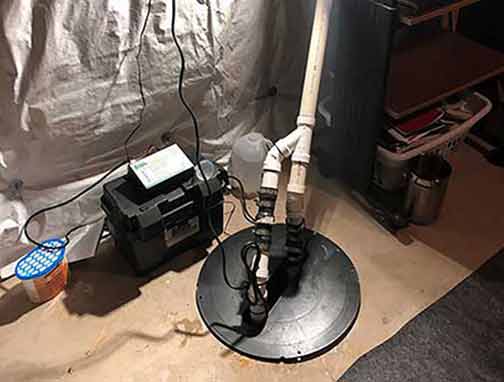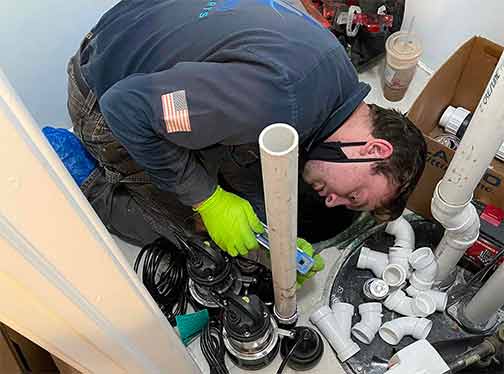
Sump pumps protect your home from basement flooding. They make it possible to travel or sleep without worrying that a basement flood will damage your home. A functioning sump pump means that basement floods will never take you by surprise.
But the value of your sump pump lies in its ability to do its work without the need for your direct involvement. Sump pumps automatically power on when water enters your basement and turn themselves off after that water is removed.
If the sump pump fails to do this, it will not provide any protection against flooding. However, since you are oblivious to the failure of the sump pump, you will continue to rely on it for protection. Prime Realty Property Management warns that is one of the biggest issues homeowners have with their sump pumps.
This kind of sump pump issue is usually not discovered until after a flood has damaged your home. But you can avoid problems like this if you know how to troubleshoot a sump pump to ensure it works. Troubleshooting your sump pump will give you peace of mind.
In this short guide, we explain the common issues with sump pump systems and how you can troubleshoot these problems to avoid a flooding emergency in your home.

Power outages during storms can cause your sump pump to stop working.
How to troubleshoot some common sump pump issues
Do these checks at the approach of flood season and during flood season.
Sump pump doesn’t have power
Power outages during storms can cause your sump pump to stop working. The sump pump may also lose power if someone forgets to plug it in or accidentally flips the circuit breaker. There are two things you can do to protect yourself in these situations. You can install a water alarm to let you know when the sump pump is not working. You may also install a battery-powered backup sump pump in case the main pump stops working.
Sump pump float is jammed
The float switch is responsible for switching on the sump pump when the water level in the sump pit rises and turning it off when the water level is low. If the float switch is stuck, it cannot perform this function. Pour water into the pit until you hear the pump power on to check if the float switch is functioning. Wait until the water is pumped out to see if the pump turns off automatically.
Sump pump is clogged
Before water enters your sump pit, it may have flowed over the ground and picked up debris. The debris inside the water can get inside your sump pump and clog it. A clogged sump pump will not only overwork but will not pump water adequately. Elevate your sump pump above the sump pit floor by placing it on a pedestal to prevent clogs. Create a schedule for cleaning your sump pit and sump pump.
The check valve is damaged
There is a check valve inside the discharge pipe of your sump pump. This valve prevents discharged water from flowing back into the pit. If the valve is faulty, the sump pump will run continuously because discharged water will circle back into the sump pit. If your sump pump runs continuously and the problem is not due to a jammed float switch, you may need to replace the check valve. A damaged check valve will overwork and damage your sump pump.
Discharge line is clogged
The sump pump discharge line can get clogged at its exit or freeze during winter. If either of these happens, discharged water will flow back into the sump pit instead of flowing to the discharge point. Install grates at the end of the discharge pipe to keep debris and small animals out of the discharge line. A special grated discharge line attachment will allow your discharge pipe to continue to work even when the discharge pipe is frozen.

Frequent sump pump failure could be a sign that you need a bigger and more durable sump pump.
The sump pit is too small
If the sump pit is not big enough to handle the volume of water that enters it, the sump pump will run more often than it should. That will make the sump pump more vulnerable to failure because the motor will burn out. If your sump pump runs continuously and you have determined that the problem is not due to a stuck float switch or damaged check valve, it could be that the sump pit is too small.
The sump pump is wrong for your home
You will have frequent sump pump issues if the sump pump’s capacity does not match the needs of your home. The right size of the sump pump depends on how much water you expect the sump pump to handle. The amount of rainfall your area receives and proximity to large water bodies are factors that influence sump pump size. Frequent sump pump failure could be a sign that you need a bigger and more durable sump pump.
Lastly, to make sure your sump pump system does not disappoint you when you need it most, make a plan to have the sump pump inspected on a schedule by a professional plumber.